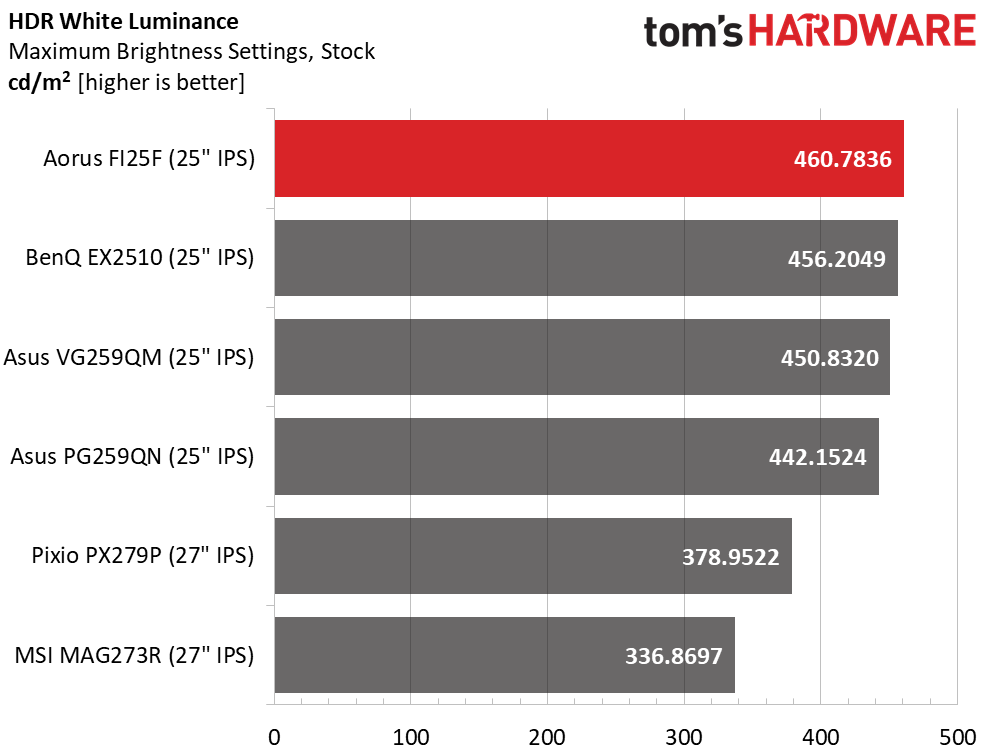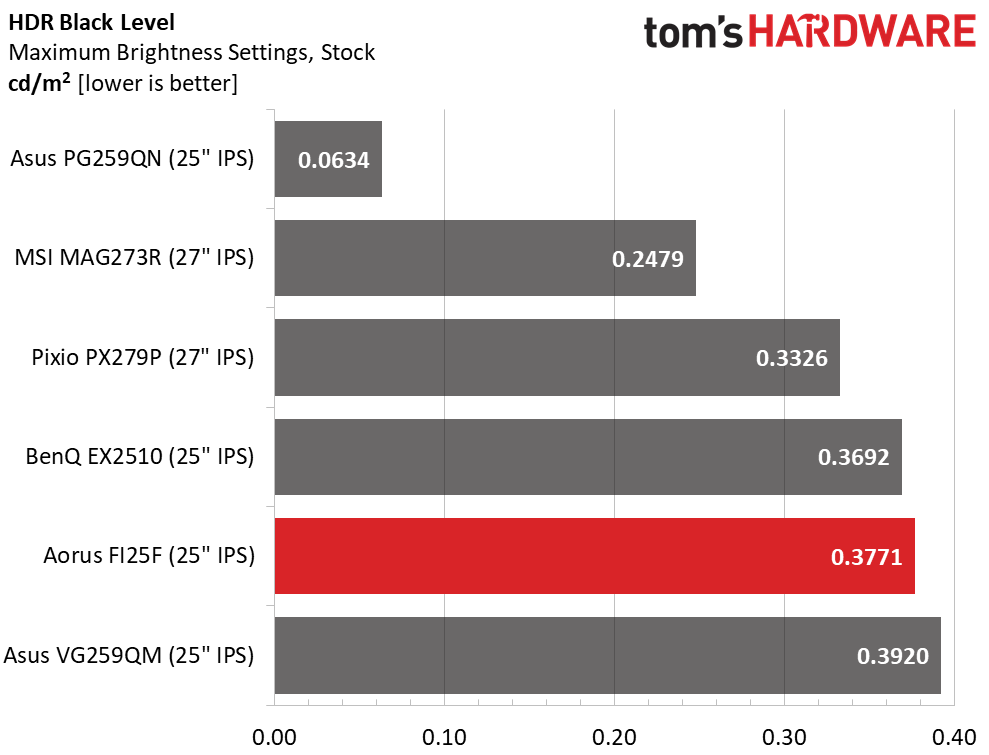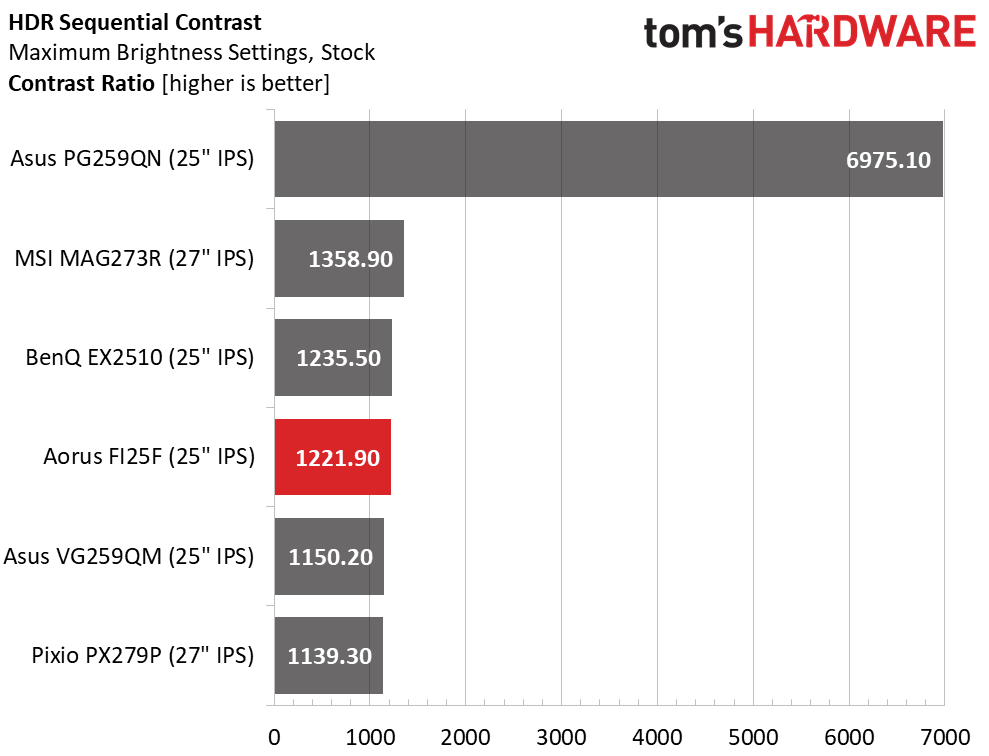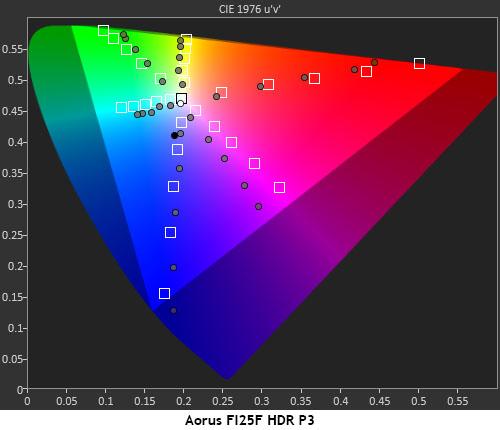Why you can trust Tom's Hardware
To learn about our HDR testing, see our breakdown of how we test PC monitors.
Since the Aorus FI25F is an edge-lit display, its HDR performance depends on availability of a dynamic contrast feature. Sadly, Gigabyte chose not to avail itself of this option. Our tests show that the FI25F processes HDR accurately but doesn’t offer any additional dynamic range, leaving HDR content looking much the same as SDR.
HDR Brightness & Contrast



One area not lacking in the FI25F is peak brightness. We measured over 460 nits in HDR mode. That number was true with both full-field and window test patterns. For most, brighter images look better, and if your content is mostly daylight and sunny scenes, this monitor excels. What you won’t get are deep blacks. 0.3771 nit is a fairly high black level. You can see that the Asus PG259QN has dealt with this neatly. Its minimum HDR black is a very low 0.0634 nit. That’s VA territory and results in a class-leading 6,975.1:1 HDR contrast ratio. The other screens, including the Aorus, have virtually the same dynamic range for HDR as they do for SDR. The takeaway is that HDR works fine on the FI25F but doesn’t look significantly better than SDR.
Grayscale, EOTF & Color


The blue grayscale error we saw in SDR mode is also present in the FI25F’s HDR mode. The error is visible in test patterns and less so in actual content. With highs around 6dE, it isn’t too far off the mark. There are no adjustments available to correct this.
The EOTF luminance curve tracks reasonably well, rising a touch too quickly from 40 to 65% then transitioning to tone-mapping about 5% early. In practice, we couldn’t see a problem, so this is also a minor error.
HDR color tracking is as good as it’s going to get for an sRGB monitor. All colors are a bit under-saturated, but they track their targets in a linear fashion. This means detail will remain very visible when showing content mastered in the DCI-P3 color space. Ideally, all HDR monitors would include extended color, but right now, that is a tradeoff made for the sake of speed.
Get Tom's Hardware's best news and in-depth reviews, straight to your inbox.
Current page: HDR Performance
Prev Page Grayscale, Gamma & Color Next Page Viewing Angles, Uniformity, Response & Lag
Christian Eberle is a Contributing Editor for Tom's Hardware US. He's a veteran reviewer of A/V equipment, specializing in monitors. Christian began his obsession with tech when he built his first PC in 1991, a 286 running DOS 3.0 at a blazing 12MHz. In 2006, he undertook training from the Imaging Science Foundation in video calibration and testing and thus started a passion for precise imaging that persists to this day. He is also a professional musician with a degree from the New England Conservatory as a classical bassoonist which he used to good effect as a performer with the West Point Army Band from 1987 to 2013. He enjoys watching movies and listening to high-end audio in his custom-built home theater and can be seen riding trails near his home on a race-ready ICE VTX recumbent trike. Christian enjoys the endless summer in Florida where he lives with his wife and Chihuahua and plays with orchestras around the state.
-
RagedAPE Hello, I purchased thisReply
AROUS 25" FI25F-EK Is it the same monitor as the review? I do not know what the EK is.
Kind regards.
Ape